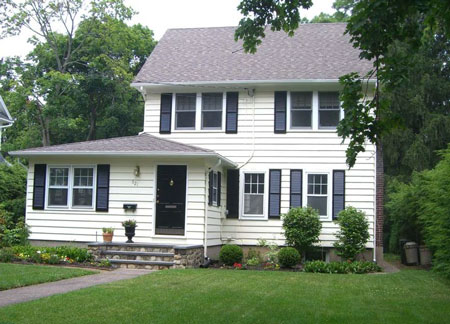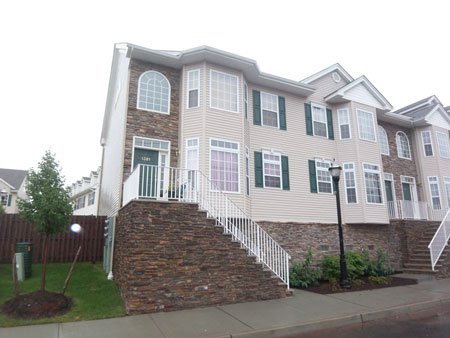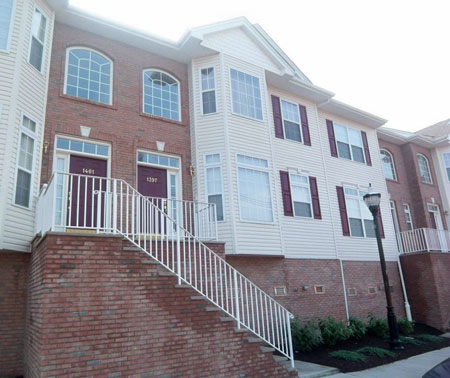I’ll be blogging from the Otteau Valuation Group Fall Workshop this morning. We’ll try something new today, Real-Time Blogging. I’ve got broadband, and I’ve got a power plug, so I’ll be blogging throughout the presentation, which runs from 9:30 until noon.
8:50 – I arrived a few minutes ago and was one of the first participants through the doors. Brokers and agents are starting to stream through the door. No doubt the continental breakfast has enticed some to come early.
8:53 – Just got a cup of coffee, I only recognize one person so far.
9:00 – Few more agents coming through, surprisingly, I recognize a number of faces. Trying hard to remember where I know these folks from, but more importantly, if I’ve scoped out one of their open houses acting as a ‘buyer’.
9:03 – That first cup of coffee didn’t last nearly long enough. I’m heading back to the continental breakfast to mingle and ‘network’.
9:10 – About 40-50 people here at this point, we’re filling up quick. I took a quick look at the registration sheet and it looks like we’ll have at least 100 here today.
9:13 – Jeffrey Otteau just walked in to set up, I’m going to head over to chat.
9:21 – Heading back for more coffee. I promise this will get more interesting as the seminar starts.
9:26 – Up to about 80-90 at this point, we should be starting momentarily.
9:31 – And we’re off!
9:36 – I’ll be sharing what I can today. This material is, of course, copyright and all of the participants paid real money for the information. It wouldn’t be fair to Otteau and the others who paid for the information to reproduce it.
9:37 – Agenda is as follows: the “Field of Dreams”, the housing slump, right pricing, and of course, the market forecast.
9:38 – “While there are some bright spots, overall it’s a bit gloomy.” Jeff is promising to give an accurate and honest assessment of the market. He just told the group that the market will remain challenging long after the slump is over.
9:41 – For those who have been to an Otteau Workshop, you are familiar with Jeff’s “Right Pricing” concept. Just an anecdote, right priced homes sell in 16-30 days. The problem in the current market is that sellers are “trying to recapture yesterday’s price.”
9:43 – Jeff isn’t holding back, he’s turning these agents into ruthless price cutters.
9:44 – And I’m not kidding, he’s talking about 18 months of price declines.
9:46 – Jeff is taking the position that the housing boom will *not* repeat. Bringing in many of the topics that we’ve discussed on the blog before. Affordability, cost of doing business, business friendliness, decline in manufacturing, etc.
9:48 – The main driver behind the 1980-2005 boom, the “economic miracle”, was due the 80s shift from manufacturing to higher paying office jobs. Population of boomers moving into the home buying phase caused the frenzied market.
9:51 – Jeff is providing a very interesting commentary on the 80’s new-construction market. From sleeping bags to the Hovnanian lottery at the Meadowlands that drew 20,000 potential buyers.
9:52 – The 1990s were defined by technology, telecommunications and pharmaceuticals. As boomers transitioned from SFH to Condos, builders followed.
9:55 – For the agents that read this blog, if you haven’t attended the Fall Workshop yet, it’s worth every penny.
9:57 – Jeff is giving a very sobering talk. No pep talk, no cheerleading, and certainly no cherry on top. Very few smiles in the crowd.
10:03 – Excellent play-by-play of the drivers behind the bubble and the events that defined it.
10:11 – First time buyers were priced out around the third quarter of 2005. For every first time buyer that buys, four other sales take place simultaneously. Those who have been here before already know the 1:5 ‘rule of thumb’.
10:18 – Spring rally fizzles, inventory saturated.
10:21 – Big changes are due to “market localization” and a return to “primary vs secondary markets”, something not seen for more than 20 years. “Manhattan is king.” Great analysis of submarkets and the drivers behind the current hot markets. If you want more information you’ll need to pay Jeff for his work.
10:28 – Another interesting anecdote, urban markets, redevelopment, revitalization takes approximately 25 years before buyers will choose them as a housing option.
10:30 – Jeff just mentioned that we’re getting into the “dark and gloomy” part now. I thought we were there already. Handing out plenty of reasons why next year will be worse. Lots of grumbles in the audience. I think I might have ever heard a gasp.
10:35 – There is just way too much information for me to report on. Just to give you folks an idea, I’d guess that I’m posting less than a 1/10th of what is being discussed here. Jeff is running through this material like a freight train.
10:38 – Jeff is really hammering on the data. Population, jobs, migration, he hasn’t missed a beat.
10:41 – Moving on to subprime, mortgage delinquencies and foreclosures. Jeff isn’t happy about foreclosure reporting. We’ve touched on Jeff’s criticisms of the Realtytrac numbers before.
10:48 – Jeff is estimating approximately 10,000 REOs over the next 1.5-2 years. County by county projections were provided as well.
10:53 – Break, more coffee. I’m off to mingle.
11:03 – Restarting, heading into the second half. Focus is going to be on “Right Pricing” and CMA/Pricing techniques.
11:07 – Another interesting anecdote, 4 out of 10 condo/townhome purchases last year were single women, single paycheck households.
11:09 – Since most agents simply parrot Otteau, expect agents to downplay the foreclosure problem over the next year.
11:10 – “Overpricing virtually guarantees that the home will sell for less.”
11:13 – Working through some CMAs demonstrating that overpricing leads to lower overall prices.
11:15 – Jeff keeps on repeating the mantra, prices going down, prices going lower.
11:17 – “Sellers have unrealistic expectations.”
11:19 – More CMAs, covering the high-end markets.
11:22 – Summary of the CMAs, If it doesn’t sell in a few weeks, it’s overpriced. Period.
11:27 – MLS based CMAs are no longer accurate.
11:35 – Walking through some great examples of why median/average pricing isn’t accurate.
11:39 – My own comment, no way agents will talk sellers into “Right Pricing” their properties.
11:47 – Oof! Got a listing that doesn’t want to price properly? It’s worthless.
11:53 – Working through commercial, not of interest to most here so I’ll skip it.
11:57 – Housing slump to extend into 2008 or 2009.
11:58 – Bottom in pricing has not yet been reached.
12:00 – Won’t see price gains until 2011. Year by year forecast was provided.
12:04 – Surprisingly, the forecast mirrors many of the discussions we’ve had on the blog.
12:07 – Some very interesting information on “Green” homes and “Green lending”.
12:09 – We’re done, heading back to the real world.





